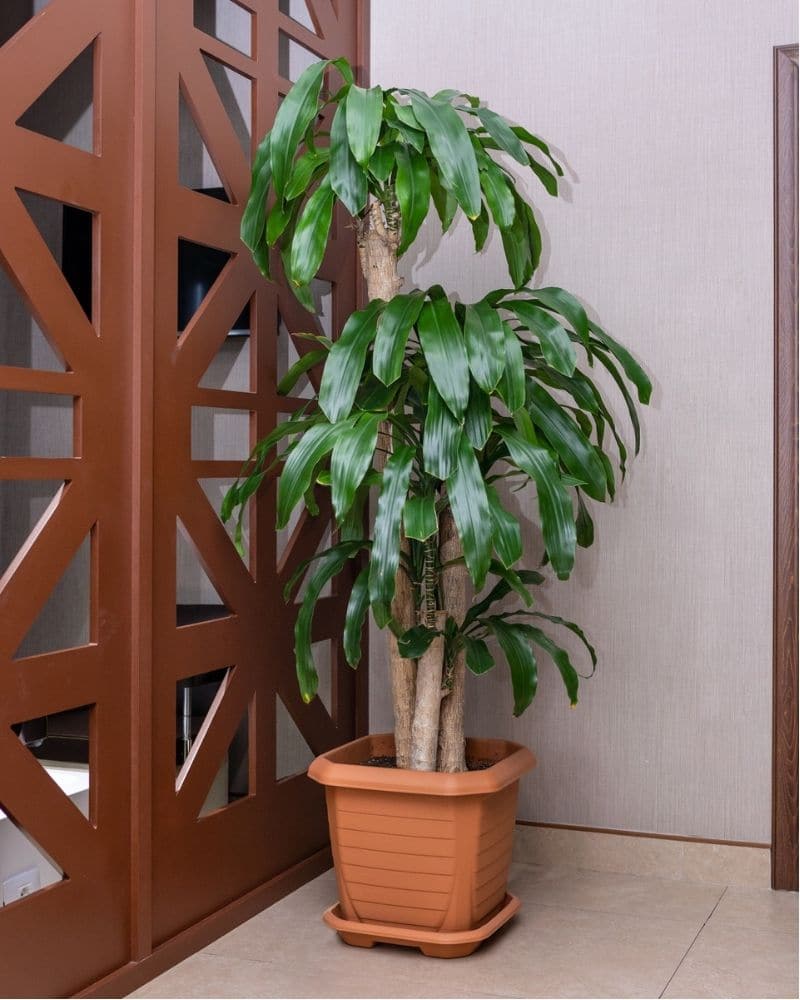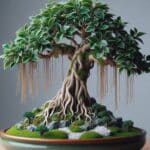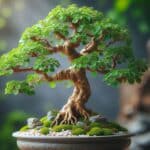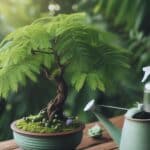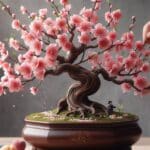A popular indoor plant, the money tree is often found growing with a braided trunk, making it the perfect candidate for bonsai growing.
Growing a money tree bonsai is not difficult – in fact, as long as you have the right know-how, this is a task that can be carried out even by the novice gardener.
A tropical member of the Malvaceae family, the money tree, Pachira Aquatica, is a great choice for any kind of bonsai growing, but especially if you are interested in feng shui.
You may also hear it referred to as the Good Luck Tree, the Malabar chestnut, money plant, Japanese money tree, Pumpo, Monguba, Saba nut, French peanut, Guiana chestnut, or the Provision tree.
A representation of fortune and good luck, this tree, native to Central America, is easy to grow.
It’s also worth to note that this article talks about the pachira aquatica plant, not the jade succulent plant (Crassula ovata), which can be trained as Jade bonsai.
Interesting Facts about Money Tree Bonsai
| Height | 7-11 inches |
| Width | 2-3 inches |
| Sunlight | Full sunlight |
| Lifespan | 10-15 years |
| Scientific Name | Pachira aquatica |
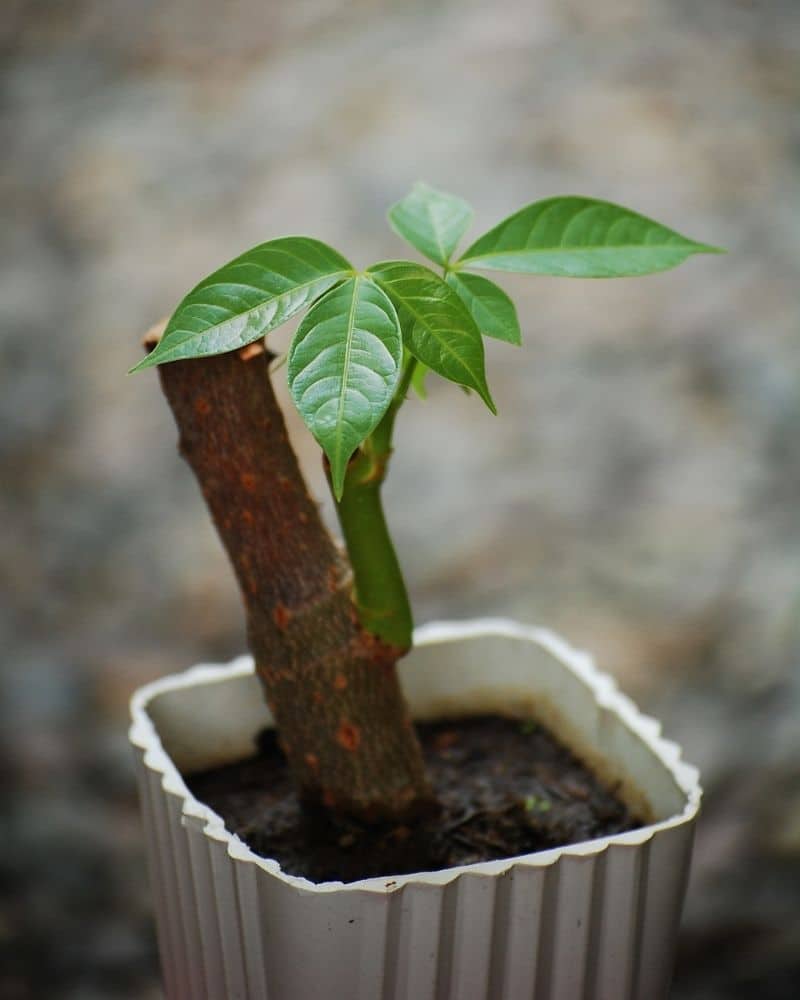
Growing Bonsai Money Trees from Seed or by Propagation
Although the Pachira aquatica plant can grow up to 65 feet tall in its natural habitat, this money bonsai tree can also be trained to grow much smaller.
To start, you will want to purchase seeds or cuttings to propagate your bonsai plant. The best kinds of cuttings to use to propagate these vigorous money trees are semi-hardwood cuttings from the tips. They are easy to root in just about any medium and can even be rooted in water.
Sometimes you can even start new plants from shoots you notice appearing from the sides of the trunks. Just place them in moist (not soggy) soil.
How to Care for Money Tree Bonsai
The bonsai tree care topic is very important to learn especially when you’re a complete beginner.
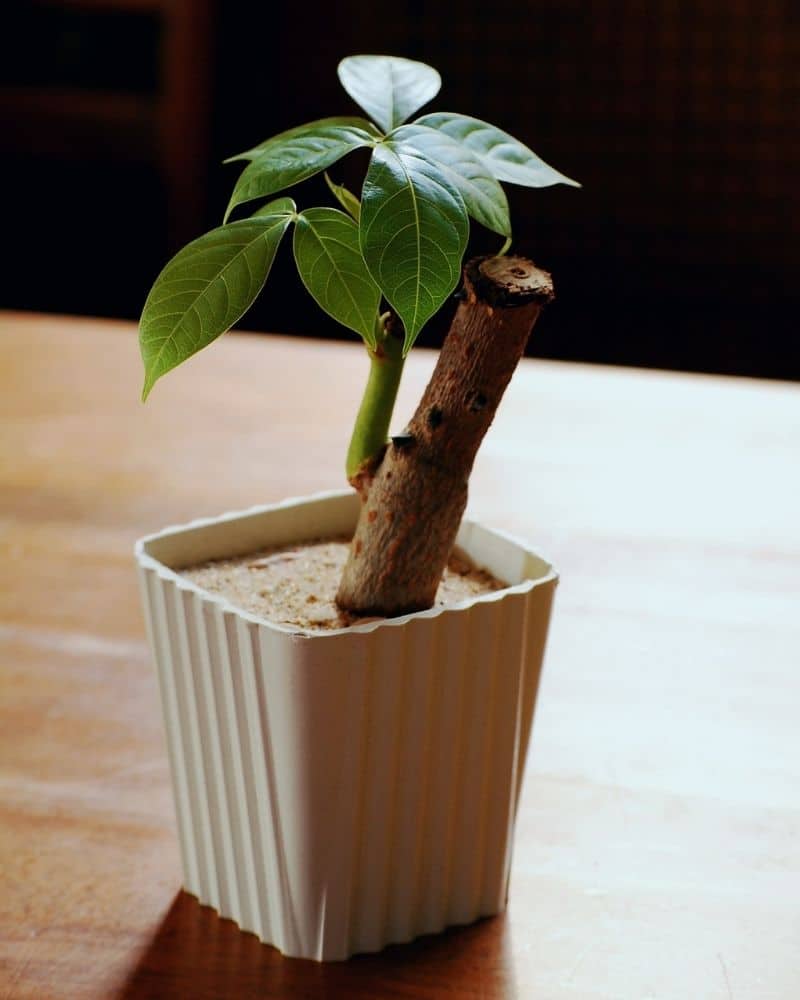
Sunlight
Grow your money tree bonsai indoor plants in as much sunlight as possible, ideally in a south-facing window. It doesn’t need to be kept too warm, but don’t let the temperatures drop below 54 degrees Fahrenheit.
You can put your money tree bonsai outdoors in the summer in most places but be sure to bring it indoors once the temperatures drop. It won’t survive a frost or freeze.
Watering
Allow the soil of your bonsai to become totally dry before your water. Then, water thoroughly. This plant is prone to overwatering, which can damage its delicate root system and lead to rot.
It does, however, require higher levels of humidity. To remedy this, place your plant on a tray with wet gravel and simply mist the foliage every now and then.
Fertilizing
This money tree plant needs to be fertilized on a regular basis in order to ensure hearty, vigorous growth. You can use a liquid fertilizer about once per week starting in the spring until the middle of the fall.
While a fertilizer that’s a bit heavier in nitrogen is ideal in the spring, you’ll want to switch to one that is more balanced moving into the summer and fall. This will help your bonsai produce healthy roots that stand the test of the winter months.
Potting and Repotting
The best time to repot your pachira aquatica bonsai is early in the spring, typically before the buds have started to appear. You only need to do this about once every three years. When you repot, trim the roots, but avoid cutting more than a quarter of them. Put them in a new container that contains a well-draining bonsai soil mix.
Pruning Money Tree Bonsai
Aim to prune or wire your money plant bonsai in the late winter, ideally before it has started to produce vigorous new growth in the spring. If you are only pruning for maintenance purposes, just cut one or two sets of leaves.
If you decide to wire your tree, make sure you remove it before the fire starts to cut into the tree’s soft bark. This can permanently injure it. Money trees cannot be readily sculpted like classic bonsai due to their swelling trunks and huge foliage.
Pests and Diseases
Very few pests and diseases affect this plant, particularly if you are growing a strong, healthy specimen. However, if the air in your home is dry (something that can be combated by addressing the humidity, as mentioned above), you may notice that mealy bugs or spider mites are a problem. These can be removed with a one-time pesticide application/
Where to Buy Money Tree Bonsai
Money tree bonsai specimens can be purchased as seeds or starter plants from many nurseries or specialty bonsai stores. Choose one with a good review to make sure you are purchasing a plant from verified seed stock – that way, you’re sure to be successful when you start to grow your plant!
FAQs
How big do bonsai money trees get?
Bonsai money trees (Pachira aquatica) can be maintained at various sizes depending on the preferences of the grower. The size of a bonsai money tree is controlled through pruning and shaping techniques, and it can range from a few inches to several feet in height.
What does the 5 leaves on a money tree mean?
The presence of five leaves on a stem of a money tree is often considered a symbol of balance and harmony in traditional Chinese culture. It is believed to bring positive energy and good fortune, making it a desirable characteristic for those who follow Feng Shui practices. The presence of five leaves is considered auspicious and represents the five elements of wood, fire, earth, metal, and water in Chinese philosophy.
If you love bonsai, check this list of different types of bonsai trees you can grow.
*image by Farhadib/depositphotos & Pixabay

